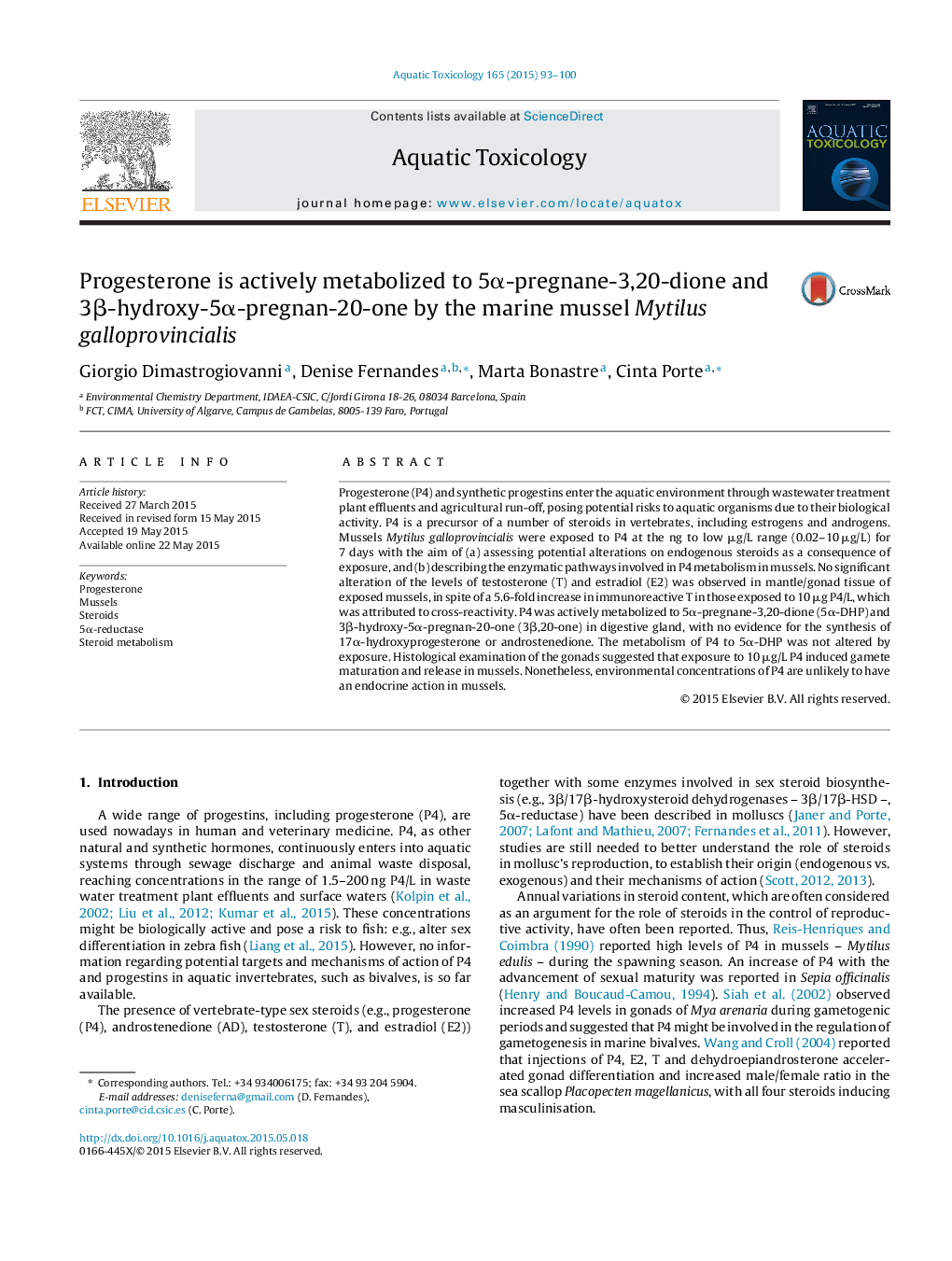| Article ID | Journal | Published Year | Pages | File Type |
|---|---|---|---|---|
| 4529014 | Aquatic Toxicology | 2015 | 8 Pages |
•Progesterone is actively metabolized to 5α-pregnane-3,20-dione by mussels.•No synthesis of 17α-hydroxyprogesterone or androstenedione detected.•Steroid metabolism was not affected by exposure to progesterone.•Progesterone induced gamete maturation and release in exposed mussels.
Progesterone (P4) and synthetic progestins enter the aquatic environment through wastewater treatment plant effluents and agricultural run-off, posing potential risks to aquatic organisms due to their biological activity. P4 is a precursor of a number of steroids in vertebrates, including estrogens and androgens. Mussels Mytilus galloprovincialis were exposed to P4 at the ng to low μg/L range (0.02–10 μg/L) for 7 days with the aim of (a) assessing potential alterations on endogenous steroids as a consequence of exposure, and (b) describing the enzymatic pathways involved in P4 metabolism in mussels. No significant alteration of the levels of testosterone (T) and estradiol (E2) was observed in mantle/gonad tissue of exposed mussels, in spite of a 5.6-fold increase in immunoreactive T in those exposed to 10 μg P4/L, which was attributed to cross-reactivity. P4 was actively metabolized to 5α-pregnane-3,20-dione (5α-DHP) and 3β-hydroxy-5α-pregnan-20-one (3β,20-one) in digestive gland, with no evidence for the synthesis of 17α-hydroxyprogesterone or androstenedione. The metabolism of P4 to 5α-DHP was not altered by exposure. Histological examination of the gonads suggested that exposure to 10 μg/L P4 induced gamete maturation and release in mussels. Nonetheless, environmental concentrations of P4 are unlikely to have an endocrine action in mussels.
